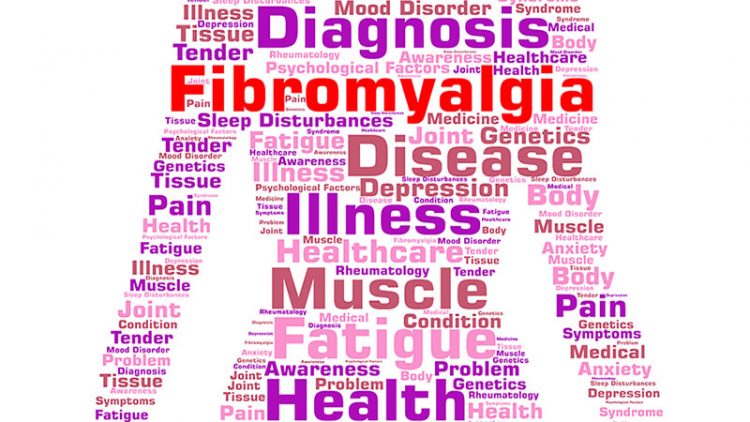Fibromyalgia: Widespread, burning pain throughout the body
Published Dec 26, 2020 • By Léa Blaszczynski
Fibromyalgia is a chronic illness whose main characteristics are widespread pain and sleep disorders. Several millions people in the US are affected by the condition, the vast majority of whom are women. Diagnosing fibromyalgia is complex and no single lab exam or X-ray can confirm fibromyalgia to date.
So what is fibromyalgia? What are the symptoms? How is it diagnosed? How is it treated? How does the pain manifest?
We asked Carenity members to understand what patients suffering from fibromyalgia feel. We explain it all in our article!

What is fibromyalgia?
Fibromyalgia is still very poorly understood. There are said to be around 6 to 12 million fibromyalgia patients in the US, and 14 million in Europe (of which 90% are women, between 40 and 60 years old). It wasn't until 2006 that fibromyalgia was acknowledged by WHO as a distinct pathology in its own right.
Fibromyalgia is a disease characterized by widespread musculoskeletal pain associated with tender points that are painful when pressed. This chronic pain is accompanied by sleep disorders, intense fatigue, and mood swings.
Pain is a constant symptom of fibromyalgia. It can also affect the cervical spine, the lower back, and the top of the spinal column. It can also be found at pressure points in the trapezius muscles, shoulders, elbows, near the knees and hips. These tender points are the same from one patient to another, making them characteristic of the disease.
Fibromyalgia triggers are numerous and are not always present. They can be physical trauma (such as whiplash) or a fall, but also emotional shock, bereavement, stress, or a change in professional or family situation..
Fibromyalgia is a chronic pain syndrome that progresses in relapses, with remissions. There may be periods of flare-ups with constant, underlying pain.
This condition does not lead to severe complications, though it is highly challenging for patients and can prevent them from carrying out certain daily tasks or even from having a full-time job.
How is fibromyalgia diagnosed?
Fibromyalgia is still not well known because, although the pain is real, no inflammation or lesions can be detected during medical examinations. Rheumatologist can only diagnose a fibromyalgia after:
- A Fibromyalgia Impact Questionnaire (FIQ): a screening tool which allows doctors to understand symptoms and how they affect the patient's daily life.
- A physical examination: to understand the extent of the pain, doctors may examine the patient for areas of tenderness. To meet the diagnostic criteria, the patient must either have severe pain in 3 to 6 different areas of the body, or milder pain in 7 or more areas, and the symptoms must have stayed at a similar level or at least 3 months.
- Having ruled out other potential conditions presenting symptoms similar to those of fibromyalgia.
How is fibromyalgia treated?
Treatment for fibromyalgia includes drug treatment, non-drug techniques and a specific care for the pain syndrome.
Drug treatments include painkillers and psychotropic drugs which act on the level of pain at brain level.
Non-drug treatments include: physiotherapy, physical activity (especially stretching), hot water hydrotherapy (to help return to physical activity), and relaxation techniques to reduce anxiety and stress such as meditation and sophrology.
What do Carenity members living with fibromyalgia feel?
We asked Carenity members to explain their fibromyalgia and the symptoms they feel through a study carried out in April 2018. Here are their responses:
"Stabbing," "electric shocks," "needles being pushed into your skin"... Carenity members living with fibromyalgia sadly do not lack analogies to describe the pain they experience. "I would describe fibromyalgia as a sort of monster grabbing my body to torture it," said one member.
The descriptive "burning" is the term the most used among our 200 respondents: "My body is burning me from the inside," "My whole body is on fire," said others.
This widespread pain penetrates the body and lingers everywhere: the back of the neck, shoulders, spine, buttocks, legs, ankles, arms... As for the intensity, it varies without any real explanation. Some speak of "cramps", others of "muscle aches and stiffness," and still others feel like their "body is being crushed in a vice." 68% of our respondents rated their daily pain at a 7 out of 10 (10 meaning "unbearable").
And this pain is not only physical... "Pain comes along with a feeling of heaviness, as if gravity is increasing. At the cognitive level, it often feels like walking through a thick fog, as if everything is far away and inaccessible."
Poor pain care
This is the most distressing figure in our study: 80% feel that their pain is not taken care of properly by medical staff. In an attempt to cope, respondents try everything: 73% use traditional painkillers, 50% do physiotherapy, 42% do relaxation exercises such as sophrology or meditation, 31% use natural products, 13% use homeopathy, 11% are in cognitive and behavioural therapy.
Members also spoke to us about acupuncture, reflexology, balneotherapy, cryotherapy and hypnosis.

As for everyday life, each has his or her own trick when pain occurs:
"I fight evil with evil by walking, swimming and avoiding negative people."
"Sometimes I apply heat, sometimes cold."
"I do self-hypnosis for 5 minutes and use visualisation, breathing, Qi gong exercises, emotional release techniques, massages, acupressure, cherry pit or flax seed cushions, heating patches, warm bathes and essential oils."
What are your tricks to ease your fibromyalgia pain?
Share with the community in the comments below!
Take care!
Study carried out by Carenity in April 2018

 Facebook
Facebook Twitter
Twitter



